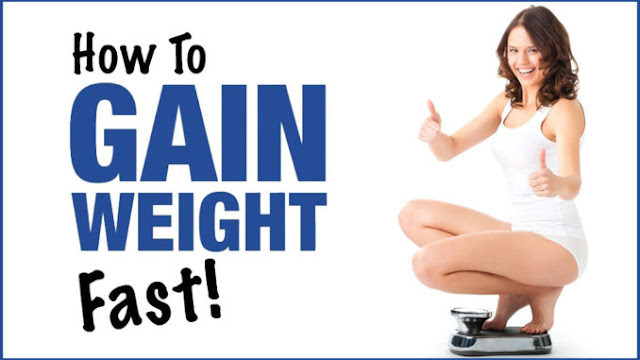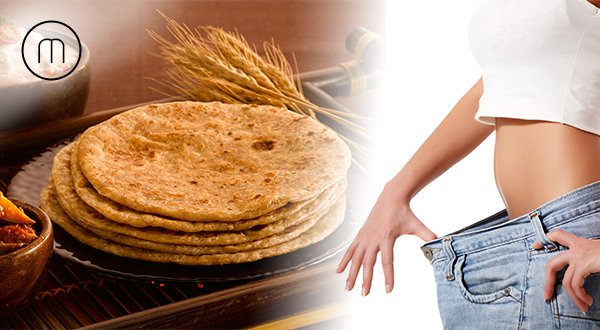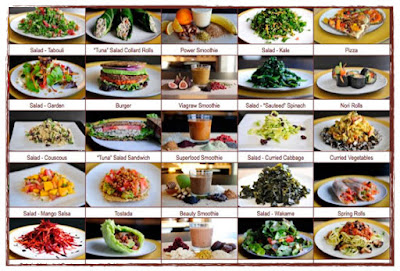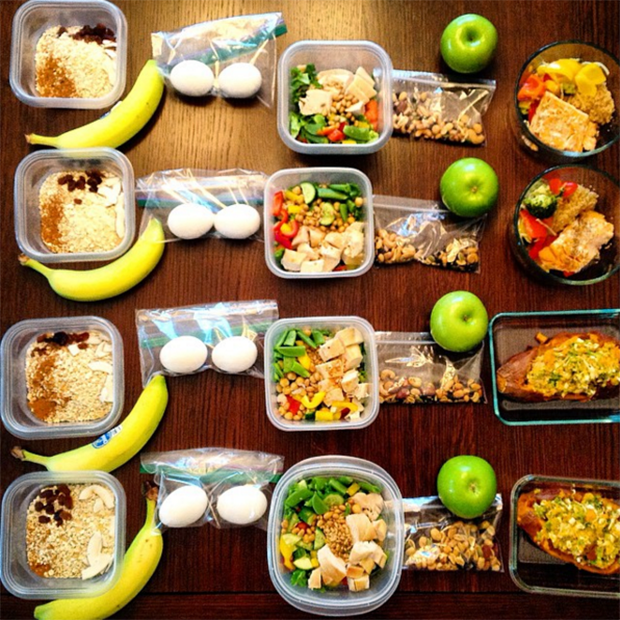Do you need to put on a few pounds to make a sports team, better your health, or simply to bulk up? Most people are out to lose weight, but you can reverse some basic dieting principles to gain some girth. However, many people do not realize how difficult it can be to gain weight quickly. Luckily, gaining weight is fairly intuitive and need not be strenuous or expensive; some basic calculations and lifestyle changes can garner impressive results.
It is true that there are many people who want to lose extra weight however it has to be understood that there are also people who will want to put on some extra weight for being very thin. These people who are extremely thin also tend to go with unhealthy food and junk to add extra fat to the body before going with natural process to gain weight.
Adding bodyweight (ideally in the form of muscle) is a matter of increasing food intake, or increasing the "calorie surplus" through a combination of increased food, or decreased exercise.
Let's start with food intake:
I would slowly increase the size of your meals, eating just a little more than you usually would every time. This will slowly increase your calorie intake, without skyrocketing body fat levels.
It may be a struggle to start eating more, but I'm only talking about little bits here and there. Maybe an extra serving of vegetables, or an extra glass of milk, as a start.
Eating calorie-dense foods (again, in slightly larger amounts than normally) such as nuts/seeds, oils, granola, potatoes, fatty fish, etc. will help you get those extra calories without feeling like you're eating constantly.
Also, eating foods of different macro nutrient profiles will have different affects on your body, depending on what body type you have.
For example, an endomorph (slightly softer body) would do better with high protein, moderate fats, and lower carbs. This is the opposite for an ectomorph (tall, skinny) body type. They do better with higher carb, moderate protein, and low fat diets.
Now, let's discuss the training side of things:
You can gain weight by adding strength exercise, however you will want to monitor how much you do, because this will burn calories for you, which is the opposite effect you want to achieve. Burning more calories means losing weight. Not what we want here.
Being on an exercise program will also do two things for you:
1. It will add muscle mass to your body, and
2. It will increase your appetite.
Exercises like squats, deadlifts, presses, rows, chinups, heavy carries, sprints (running or biking), and various core exercises should form the meat and potatoes of a fat loss program.
The exercises above are compound exercises that will add muscle to your frame, of course always factoring in that you are eating slightly more than normal.
Some Usefull Tips:-
1.Calculate the required number of calories.
To gain a pound, you'll need an excess over your daily calories a.k.a. resting metabolic rate (RMR). For an average man this is 2500, 2000 for women, and if you are doing any activity then this will vary. Your resting metabolic rate is the amount of calories per day that your body requires to maintain your existing weight. Here's how to figure it out with the Mifflin .
*Find your weight in kilograms. To convert your weight from pounds to kilograms, divide your weight in pounds by 2.2.
*Find your height in centimeters. To convert your height from inches to centimeters, multiply your height in inches by 2.54.
*Plug your information into the formula: RMR = 10 * weight (kg) + 6.25 * height (cm) - 5 * age (yr) + x.
For men, x = 5.
For women, x = -161.
*Understand that the formula calculates how many calories you would burn if you spent the entire day resting. You probably burn a few hundred more calories than your RMR would indicate during the course of each normal day.The RMR is just a rough estimate to get your weight-gain diet started.
2.Account for your activity level:
Since you (hopefully) do not sit still in bed all day, you must account for the calories you burn through activity. Once you have your RMR, use the Harris Benedict Formula below with your RMR as BMR (Basal or Base Metabolic Rate) to determine your total daily calorie needs depending on your activity level. To determine your total daily calorie needs, multiply your BMR by the appropriate activity factor:
*If you are sedentary (little or no exercise) : BMR x 1.2
*If you are lightly active (light exercise/sports 1-3 days/week) : BMR x 1.375
*If you are moderately active (moderate exercise/sports 3-5 days/week) : BMR x 1.55
*If you are very active (hard exercise/sports 6-7 days a week) : BMR x 1.725
*If you are extra active (very hard exercise/sports and physical job or 2x training) : BMR x 1.9
*For example, a 19-year-old woman who is 5’5” and 130 pounds would plug her information into the calculator and find out that her BMR is 1366.8 calories. Then, since she is moderately active, exercising 3-5 days per week, she would multiply 1366.8 by 1.55, to equal 2118.5 calories. That is the number of calories that her boded to add to your diet. Now that you have an idea of how many calories your body burns in a day, you can calculate how many more you need to gain weight.
*Aim for one or two pounds per week. More than that could lead to a cycle of crash dieting, in which you gain and lose weight quickly.
*At first, try adding 500 calories a day to your diet. For instance, if you need 2300 calories a day to maintain your current weight, strive to consume 2800 calories daily. This should be an extra 3500 calories over the course of a week, which will lead to one pound of weight gained.
3.Eat three meals and two snacks per day:
Eating on a regular schedule can help you make sure you're getting enough calories every day. Aim to have generously-portioned breakfast, lunch and dinner, as well as two snacks in between.
4-Focus on hefty foods:
You don't have to exclusively eat high-fat foods to gain weight. Actually, you'll gain weight more steadily and safely if you adjust your diet slightly to include denser foods and extra condiments. Consider these options:
*Drinks — Try protein shakes, juices or whole milk. Avoid diet sodas.
*Breads — Hearty and dense breads, such as whole wheat, oat bran, pumpernickel and rye, are more nutritious than white bread. Cut thick slices and spread generously with peanut butter, jam, honey, hummus, or cream cheese.
*Vegetables — Look for starchy vegetables (potatoes, peas, corn, carrots, winter squash, beets). Avoid vegetables that are mostly water (broccoli, cauliflower, zucchini, green beans, celery, and cucumbers).
*Fruit — Choose dense fruit (bananas, pears, apples, pineapple, dried fruit) over watery fruit (oranges, peaches, plums, berries, watermelon).
*Soups — Go for hearty cream soups instead of broth-based soups. If you have trouble with edema or high blood pressure, you may want to avoid store-bought soups that are high in sodium.
*Added oils — When you're cooking, add a generous amount of oil to your food. The healthiest oils are unrefined (extra virgin) oils such as olive, coconut, canola, palm, and (of course) butter. Less healthy but still acceptable sources of oil are those high in omega-6 fatty acids (pro-inflammatory) such as safflower, sunflower, and peanut oils. Unhealthy oils that contain trans fats include shortening and soybean oil (aka vegetable oil).
*Spreads — Spreading delicious calorie-rich toppings on toast, crackers, pitas, and any other carbohydrate source is an excellent way to increase caloric intake. Some good high-calorie spreads are guacamole, olive oil, cream cheese, hummus, butter, nut butters, sour cream, cheese slices, and mayonnaise. For even more calories, mix these with shredded meats like chicken or fish.
*Supplements — Some nutritional supplements are designed specifically for weight gain. Investigate brands and products that are suggested for people suffering from illnesses that lead to weight loss, such as Crohn's disease or hyperthyroidism.
5.Avoid trans fats:
Trans fats can increase belly fat, as well as inducing unhealthy insulin levels. Steer clear of margarine, shortening, packaged snack foods, and processed meats.
6.Eat more protein:
A lack of protein in your diet can lead to the loss of lean body mass, even if you're consuming excess calories. Here are some foods to consider:
Boiled soybeans
Soy or whey protein powder
Peanuts or peanut butter
Steak or hamburger
Chicken
Tuna
Building Muscle to Gain Weight
1.Start weight training:
Building muscle through weight training will not only convert your extra weight into lean body mass, but it will also stimulate your appetite. Consider these points before you begin:
*The extra muscle will increase the speed of your metabolism, so you'll need to consume more calories to maintain or gain weight.
*During the first month of weight training, you may experience tremendous gains if you are faithful to your schedule. However, also expect this to level off after this initiatory period (known in the bodybuilding world as a plateau). You overcome this by re-evaluating your weight and muscle mass, while altering your diet to include more food and heavier weights.
*When you start a new training routine, you will often experience extreme muscle soreness, called DOMS (Delayed Onset Muscle Soreness).This soreness is completely normal and should not prevent one from keeping to their weight training schedule. It goes away in 3 to 5 days.
2.Lift heavy weights for maximum muscle gain:
To achieve hypertrophy (or large muscles), you should be lifting weights that are as close as possible to the maximum you can handle .
*The weights should be so heavy that you hit "failure" (or the physical inability to lift again) after 12 or 13 reps.
*Use forced reps. With the assistance of a spotter, you can do 2 or 3 more lifts after the point of failure. Forced reps increase the stress placed on muscle fibers and overload the target muscles, making them work harder than ever. Have your training partner assist you in the last few lifts.
*Up your weight as soon as you need to. If you can do 15 lifts without hitting failure, you need more weight. It's vital that you keep increasing the weight of your lifts so that you can stave off plateauing
3.Supplement your diet with more protein:
A protein-rich diet can help you gain mass while you're weight training. Try to eat a meal that's heavy on protein shortly after you finish exercising.
*Avoid "rabbit starvation", which can result from increased physical activity coupled by a diet focused almost exclusively on lean protein. Make sure your diet still has plenty of fat in it.
Troubleshooting
1.Spot-gain weight by building muscle:
Don't get your hopes set on gaining weight in one spot by eating more. The way your body distributes fat is largely determined by genetics, and can't be changed by diet alone. If you usually gain weight in your stomach but you want to gain it in your booty, your best bet is to build your gluteal muscles instead of trying to eat more.
2.See a doctor.
If you can't gain weight in spite of following the above steps, schedule an appointment with your family physician. You may have a medical condition that prevents your body from absorbing fat or building muscle.
3.Weigh yourself at the same time each day:
Because your weight can fluctuate throughout the day, try to set one time at which you'll step onto the scale. Many people prefer to weigh themselves first thing in the morning, before eating breakfast.
4.Avoid binging:
Cycles of binging (or overeating) and fasting have been shown to cause uneven levels of glucose in people who aren't used to it, along with insulin spikes as a result of the sudden intake of carbohydrates. If your energy levels are uneven, you may want to give your body chance to adapt, or spread your calories more evenly throughout the day. This will be more true for people who are more active throughout the day, as glycogen levels will be difficult to replenish. On the other hand, periods of calorie restriction increases insulin sensitivity and allows the body to perform certain maintenance operations it otherwise would not, such as recycling empty fat cells. Decreased insulin sensitivity increases the onset of Type 2 diabetes.













